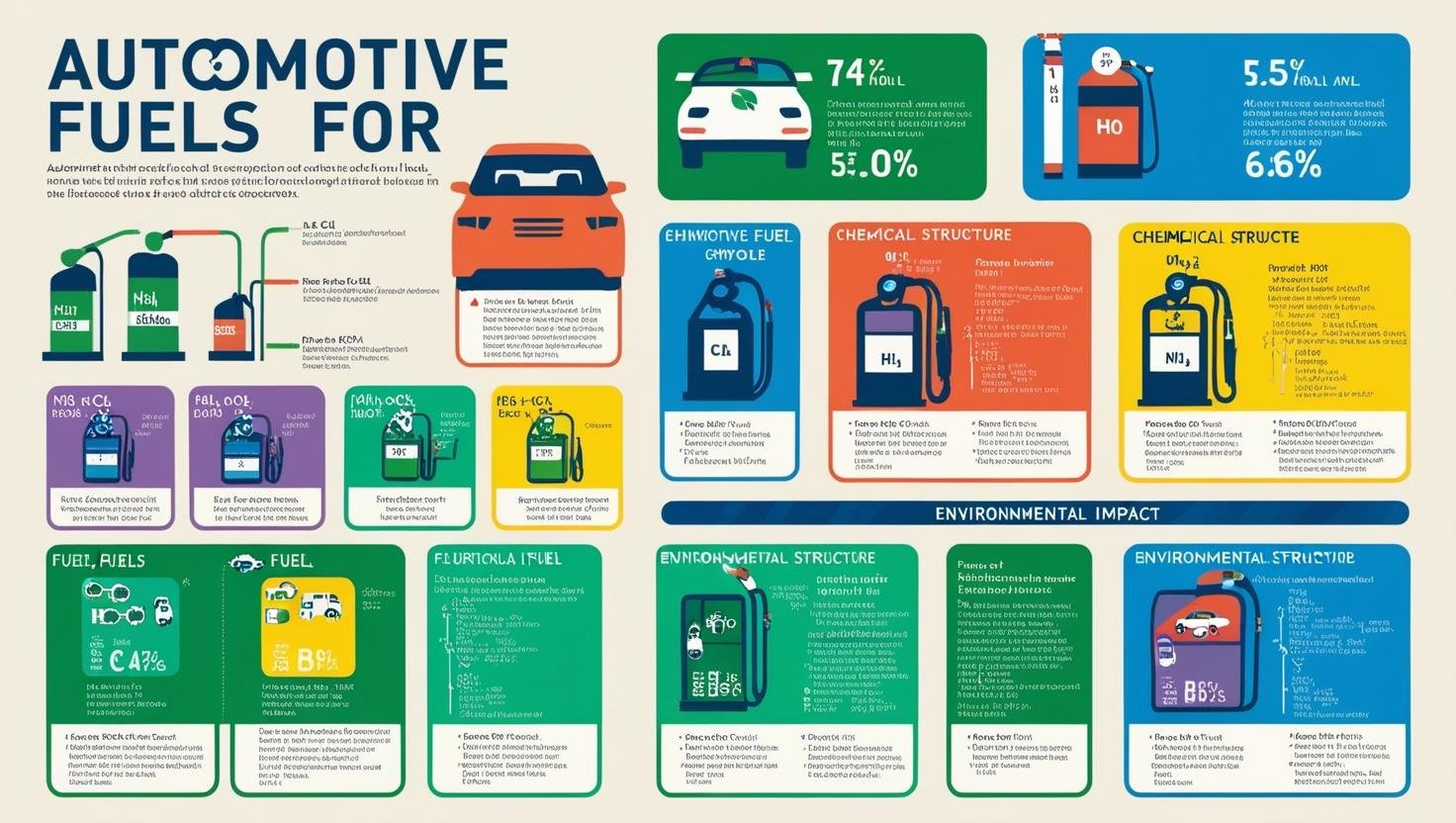The automotive industry is undergoing a profound transformation as it seeks sustainable solutions to meet the demands of modern transportation while addressing environmental concerns. Fuel plays a central role in this transition, and understanding the different types of automotive fuels, their applications, and their future prospects is essential. This article explores traditional and alternative fuels, their benefits, drawbacks, and how they are shaping the future of mobility.
Traditional Fuels
1. Gasoline (Petrol)
Gasoline is the most widely used fuel for internal combustion engines (ICEs). Derived from crude oil, it powers millions of vehicles worldwide.
- Advantages: High energy density, widespread availability, and compatibility with existing infrastructure.
- Disadvantages: Significant greenhouse gas emissions, air pollution, and dependency on finite fossil fuel resources.
- Future: Innovations such as more efficient ICEs and hybrid systems aim to reduce gasoline consumption. However, the long-term future of gasoline is limited as the world transitions to cleaner energy sources.
2. Diesel
Diesel fuel, also derived from crude oil, is used primarily in trucks, buses, and heavy-duty vehicles due to its high torque and efficiency.
- Advantages: Greater fuel efficiency and durability compared to gasoline engines.
- Disadvantages: Higher emissions of nitrogen oxides (NOx) and particulate matter.
- Future: The use of cleaner diesel technologies and biodiesel blends can mitigate some environmental impacts, but its dominance is expected to decline with the rise of electrification and alternative fuels.
Alternative Fuels
1. Electricity
Electric vehicles (EVs) run on electricity stored in batteries and are gaining popularity due to their environmental benefits.
- Advantages: Zero tailpipe emissions, high energy efficiency, and compatibility with renewable energy sources.
- Disadvantages: Limited range, charging infrastructure challenges, and battery production environmental impact.
- Future: Advancements in battery technology (e.g., solid-state batteries) and expanding charging networks will accelerate EV adoption.
2. Biodiesel
Biodiesel is a renewable fuel made from vegetable oils, animal fats, or recycled cooking oil. It can be used in diesel engines with little or no modification.
- Advantages: Reduced emissions, renewable, and biodegradable.
- Disadvantages: Feedstock availability and competition with food production.
- Future: Algae-based biodiesel and other innovations could make biodiesel more sustainable and scalable.
3. Ethanol
Ethanol is an alcohol-based fuel typically produced from crops like corn or sugarcane. It is often blended with gasoline (e.g., E10, E85).
- Advantages: Renewable and reduces greenhouse gas emissions when blended with gasoline.
- Disadvantages: Energy-intensive production and potential competition with food crops.
- Future: Cellulosic ethanol, made from non-food plant materials, could address sustainability concerns.
4. Hydrogen
Hydrogen fuel is used in fuel cell electric vehicles (FCEVs) to produce electricity, emitting only water vapor.
- Advantages: Zero emissions, fast refueling, and high energy density.
- Disadvantages: Limited infrastructure, high production costs, and energy-intensive hydrogen production.
- Future: Green hydrogen (produced using renewable energy) holds promise as a clean, scalable fuel source.
5. Compressed Natural Gas (CNG) and Liquefied Natural Gas (LNG)
CNG and LNG are cleaner-burning fossil fuels used in some cars, buses, and trucks.
- Advantages: Lower emissions than gasoline and diesel, abundant supply.
- Disadvantages: Non-renewable, limited infrastructure, and lower energy density.
- Future: Renewable natural gas (RNG) produced from organic waste could enhance the sustainability of CNG and LNG.
6. Propane (LPG)
Liquefied petroleum gas (LPG) is used in some vehicles as an alternative to gasoline and diesel.
- Advantages: Cleaner emissions, cost-effective, and widely available.
- Disadvantages: Lower energy content and limited availability of LPG-compatible vehicles.
- Future: LPG is likely to remain a niche fuel for specific applications.
7. Synthetic Fuels (E-Fuels)
Synthetic fuels are produced by combining hydrogen with carbon dioxide, creating a liquid fuel compatible with existing ICEs.
- Advantages: Carbon-neutral potential and compatibility with current vehicles and infrastructure.
- Disadvantages: High production costs and energy requirements.
- Future: Scaling up renewable energy use in production could make e-fuels a viable option for hard-to-electrify sectors.
The Future of Automotive Fuels
The future of automotive fuels will be shaped by technological advancements, policy decisions, and environmental considerations. Key trends include:
- Electrification: Electric vehicles are expected to dominate passenger car markets, supported by falling battery costs and expanding charging infrastructure.
- Hydrogen Adoption: Hydrogen fuel cells will play a critical role in decarbonizing heavy-duty transport and industries.
- Sustainable Biofuels: Advanced biofuels and synthetic fuels will complement electrification, particularly in aviation, shipping, and long-haul trucking.
- Energy Efficiency: Innovations in vehicle design and engine efficiency will reduce fuel consumption across all types of vehicles.
- Global Collaboration: International efforts to standardize regulations and invest in sustainable fuel technologies will accelerate the transition to cleaner energy.
Conclusion
The landscape of automotive fuels is evolving rapidly, driven by the need to balance energy demands with environmental responsibility. While traditional fuels like gasoline and diesel are likely to decline, alternative fuels such as electricity, hydrogen, and biofuels will play an increasingly important role. By embracing diverse energy solutions, the automotive industry can pave the way for a sustainable and efficient future of mobility.



